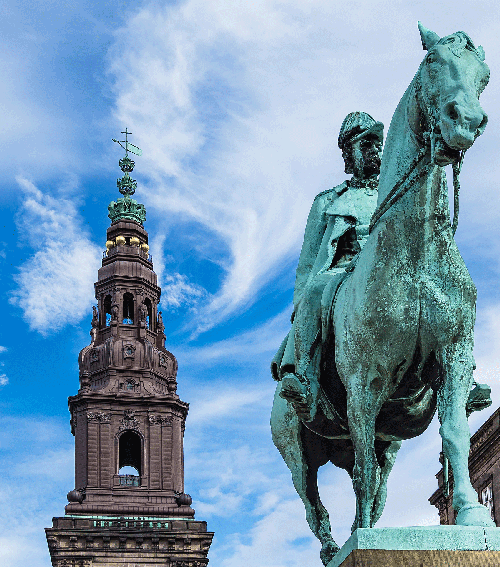Greenland: The world's largest island

The People of Greenland
Greenland has around 56,000 inhabitants. They mostly live in the 20 % of the country that is not covered by ice and snow.
The first humans to set foot on Greenland arrived some 4,000-5,000 years ago from the North American continent via Canada, after the sea froze in the narrow strait at Thule in Northern Greenland. No less than six different Inuit cultures have migrated in distinct waves.
Greenland’s current population is descended from the last migration, the Thule culture, who began arriving in the 1200s AD. At the same time, Norsemen led by the Norwegian Viking Erik the Red settled in Southern Greenland. The Norse population disappeared around 1500AD for reasons that have never been fully explained.
Because of the Arctic climate, the people of Greenland mostly live on the coast in settlements and cities. Historically, fishery and hunting have been the key to survival due to the short summers. Greenland's climate and geography make farming almost impossible, except for the extreme south of the country, where sheep farming is popular.


Nature in Greenland
Greenland's natural beauty is breathtaking. As the people of Greenland often say, "You feel very small" in magnificent surroundings that include glaciers, fjords, mountains and amazing fauna.
Icebergs are some of the most spectacular natural formations in Greenland. These majestic floating masses of ice are sometimes several stories high. Icebergs are the result of the constant movement of the Greenlandic ice cap. Only about 10 % of an iceberg is above the sea.
In recent years, some scientists have warned that the immense ice cap of Greenland is shrinking. Many attribute this to climate change caused by humans. An international team reported in the Journal of Geophysical Research Letters that the ice cap covering Greenland is losing approximately 110 million Olympic size swimming pools worth of water every year.
Did you know
The Self-Government Act
Greenland was ruled by Denmark from the early 18th century until 1979, when home rule began. In 2009, Greenland approved the Self-Government Act in a referendum.
The act means that Greenland can assume additional areas of responsibility. However, foreign policy, defence policy, and security policy cannot be transferred to Greenland.
Greenlandic is recognised as the official language.

Greenland today
Today, Greenland is a mixture of modernity and tradition. The country is home to contemporary cities with crowded airports, busy shops, educational institutions, cozy cafés, and cinemas. But it also preserves its small towns and traditional settlements, where the primary source of income still is seal hunting.
Everyone has access to publicly-funded education, a public health service, and pensions. Denmark supports Greenland with a substantial annual block grant.
Fishing is still the most important driver of the Greenlandic economy. However, the fishing industry is not able to sustain as many jobs as it used to. The Greenland Government is investigating ways to profit from the mineral resources of the island, which includes gold, natural gas, diamonds, lead and zinc. The idea is to attract foreign investment to this sector and to provide the services needed.
The number of foreign overnight visitors has risen by more than 50 % since 2000, and the number of cruise line passengers stopping by Greenland has grown by around 150 % in the same period. Tourists enjoy looking at the drifting icebergs, humpback whales, polar bears, musk oxen, walruses, reindeer, and sea eagles.
Did you know
- In Greenland, the sun does not set from May 25 to July 25
- June 21 is the longest day of the year and is also a national holiday
- July is the only month when the temperature reaches above freezing
Read more about Greenland at Visit Greenland's website.


